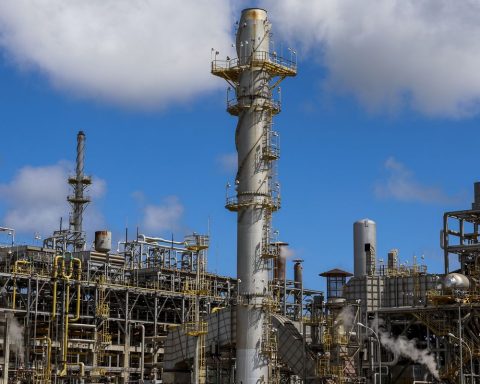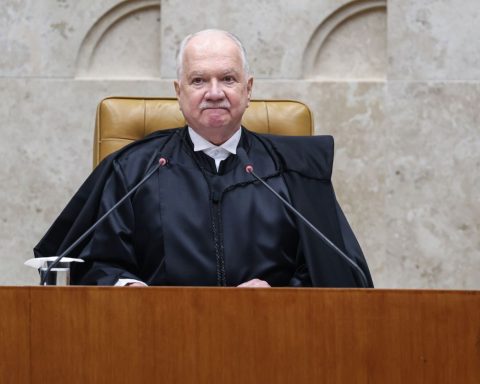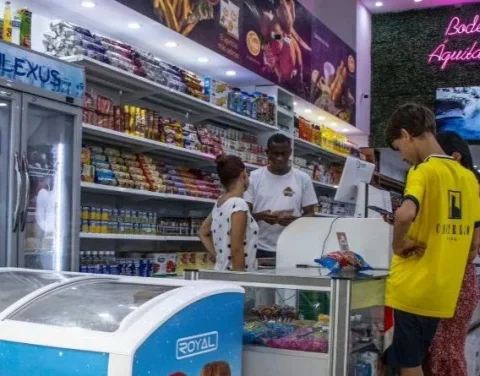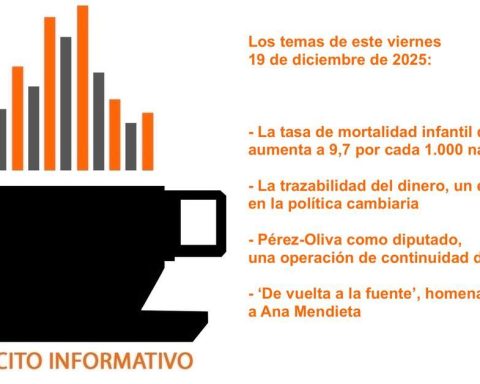External accounts had a negative balance of US$ 4.625 billion in October, informed today (25) the Central Bank (BC). In the same month of 2021, the deficit had been US$ 6.012 billion in current transactions, which are purchases and sales of goods and services and income transfers with other countries.
The difference in the interannual comparison is due to the trade balance surplus, which increased by US$ 1.2 billion, while deficits in services increased by US$ 967 million and in primary income (profits and dividends) decreased by US$ 1.1 billion.
In 12 months, ending in October, the deficit in current transactions is US$ 60.289 billion, 3.31% of the Gross Domestic Product (GDP, sum of goods and services produced in the country), compared to a negative balance of US$ 61.676 billion (3.43% of GDP) in September 2022 and a deficit of US$41.923 billion (2.63% of GDP) in the equivalent period ending in October 2021.
In the accumulated result for the year, the deficit is US$ 44.039 billion, against a negative balance of US$ 40.108 billion from January to October 2021.
Trade balance and services
Goods exports totaled US$ 28.005 billion in October, an increase of 22.6% compared to the same month of 2021. Imports totaled US$ 25.453 billion, an increase of 18.5% compared to October last year. With these results, the trade balance closed with a surplus of US$ 2.551 billion last month, compared to a positive balance of US$ 1.367 billion in October 2021.
In line with the expansion in the volume of foreign trade, the deficit in the services account (international travel, transport, equipment rental and insurance, among others) added up to US$ 3.444 billion in October, an increase of 39% compared to the US$ 2.478 billion in the same month of 2021.
In the case of international travel, following the trend of recent months, revenues from foreigners traveling to Brazil grew in the interannual comparison and reached US$ 413 million in October, against US$ 266 million in the same month of 2021. Expenses by Brazilians abroad went from US$ 531 million in October of last year to US$ 1.067 billion in the same month of 2022.
As a result, the travel account closed the month with a deficit reaching US$ 653 million, compared to a deficit of US$ 265 million in October 2021, contributing to increase the negative balance in services. According to the BC, this is an account greatly affected by the restrictions imposed by the covid-19 pandemic, and despite the recovery, the values are still far below the pre-pandemic period.
lace
In October, the deficit in primary income (profits and dividends, interest payments and wages) reached US$ 4.054 billion, with a reduction of 22% compared to US$ 5.198 billion in the same month of 2021. Normally, this account is in deficit, since there are more investments by foreigners in Brazil, who send profits abroad, than by Brazilians abroad.
In the case of profits and dividends associated with direct and portfolio investments, there was a deficit of US$ 3.009 billion in October this year, compared to that observed in September 2021, of US$ 4.426 billion, a reduction of 32%. The reduction was due to lower expenses with portfolio investments, which totaled US$ 383 million in October 2022, compared to US$ 2.295 billion in October 2021.
Net interest expenses increased by 35.1% from US$ 780 million to US$ 1.053 billion.
The secondary income account (generated in one economy and distributed to another, such as donations and remittances of dollars, without counterpart services or goods) had a positive result of US$ 321 million, against US$ 296 million in October 2021.
Investments
Net inflows in direct investments in the country (IDP) totaled US$ 5.541 billion last month, compared to US$ 3.375 billion in October 2021.
Last month, there were net inflows in capital participation of US$ 3.792 billion, such as the purchase of new companies and reinvestments of profits. Meanwhile, intercompany operations (such as loans from the headquarters abroad to the branch in Brazil) had a surplus of US$ 1.749 billion.
In the 12 months ended in October, the IDP totaled US$ 73.805 billion, corresponding to 4.05% of GDP, compared to US$ 71.639 billion (3.98% of GDP) in the previous month and US$ 50.022 billion (3. 14% of GDP) in October 2021.
When the country registers a negative current account balance, it needs to cover the deficit with investments or loans abroad. The best form of financing the negative balance is the IDP, because the resources are invested in the productive sector and tend to be long-term investments. For the month of November, the Central Bank’s estimate for the IDP is for net inflows of US$ 6.502 billion.
Portfolio investments in the domestic market totaled net inflows of US$3.251 billion in October 2022, comprising outflows of US$3.237 billion in stocks and mutual funds and inflows of US$14 million in debt securities.
The stock of international reserves reached US$ 325.546 billion in October, a reduction of US$ 2.034 billion compared to the previous month. The result was mainly due to net sales of US$ 1 billion in repurchase line operations, and negative contributions from price and parity variations, of US$ 823 million and US$ 166 million, respectively. Interest income totaled $576 million.
Revisions
BC policy establishes an ordinary annual review of the balance of payments and the international investment position in the months of July and November. The sources are the definitive data from the Census of Foreign Capital in the Country and the survey Brazilian Capitals Abroad (CBE), both from 2021, from the payment module abroad of the Electronic Declaratory Registry – Financial Operations Registry (RDE-ROF), of database published by the Foreign Trade Secretariat (Secex) containing values for freight expenses and the Declaration on the Use of Resources in Foreign Currency Arising from Receipt of Exports (Derex).
For 2021, the revision of external sector statistics resulted in an increase of US$ 18.4 billion in the current account deficit, which increased from US$ 27.9 billion (1.74% of GDP) to US$ 46.4 billion (2.88% of GDP). The increase was due to the revisions of Transport – Freight, an increase of US$ 9.2 billion in net expenses, and of profits, an increase of US$ 8.5 billion in net expenses. The remaining revision items added an additional US$800 million to the deficit.
As a result, deficits in primary income and services were revised, respectively, from US$50.5 billion to US$59 billion, and from US$17.1 billion to US$27 billion.
In primary income, total expenditure on direct investment profits for 2021, calculated in the census, reached US$ 53.2 billion, an increase of US$ 9.8 billion compared to the previous estimate. There was a $7.2 billion increase in remitted earnings expense and a $2.7 billion increase in reinvested earnings expense.
Regarding the total income from direct investment profits for 2021, calculated by the CBE, the revision implied an increase of US$ 1.3 billion, totaling US$ 24.6 billion, against US$ 23.4 billion previously estimated.
Relative to the financial account, direct investment liabilities remained at the same level. The review of reinvested earnings expenses increased the IDP in equity participation by US$ 2.7 billion, but new divestment operations, settled directly abroad and linked to the reduction of Direct Investment Abroad (FDI)-equity participation, added $2.3 billion.
Additionally, net inflows in intercompany operations were revised upwards by US$400 million. On a net basis, IDP transactions in 2021 remained at US$46.4 billion, the same value as the revised current account deficit.
For 2022, from January to September 2022, the current account deficit was revised from US$29.6 billion to US$39.4 billion. Of the total increase of US$9.8 billion, the transportation review accounted for US$8.9 billion. The other items are associated with the improvement of estimates, which now incorporate more recent information from the CBE survey.
In the financial account, IDP transactions were revised from US$ 70.7 billion to US$ 68.4 billion, basically due to retroactive information regarding the amortization of intercompany operations through the export of goods.
















